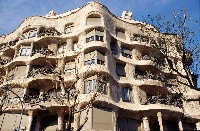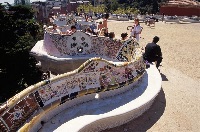Gaudi showed interest in architecture and design. Gaudi’s work on the Sagrad Familia coupled with his mastery of shapes and color were significance in his establishment as a Nouveau artist. Antonio was a native of Reus Catalonia, a member of a family that practiced copper molding. He enrolled to for architectural studies in at the University of Barcelona but ended up massively aligned to the studies of philosophy and aesthetics. His involvement with Pau Mila who had the experience of roman architecture motivated him to join in the then on going art revolution. His involvement contributed to his appreciation of medieval arts. However, these extreme influences did not deter him from his Catalonian roots, evident in his participation in the revival of the Catalan language and poetry. Antonio's knowledge of the Catalan medieval history was significant in his inspiration to use the findings in development of both arts and structures. His experiments with the parabolic arc resulted from inspiration of his knowledge of the Catalans ways. The parabolic arc was later used in construction and was vital in his first job, the Casa Vincens. His use of light to create a modulating effect greatly enhanced his repute as an architect. Under the sponsorship of his patron, Count Guell, an affluent steel manufacturer, he completed numerous commissions. Key among them is the Barcelona's Palau Guell where he first used his new found parabolic arc. He was responsible for the development of the Colonia Guell, a church at Santa Coloma adjacent to Barcelona. The complexity of this job which involved the use of a sample structure to test the weights marked an important discovery in the field of architecture. Despite his lack of any concrete involvement with vigilante groups, Gaudi's work was paramount in dictating the themes presented by the new art revolution.

